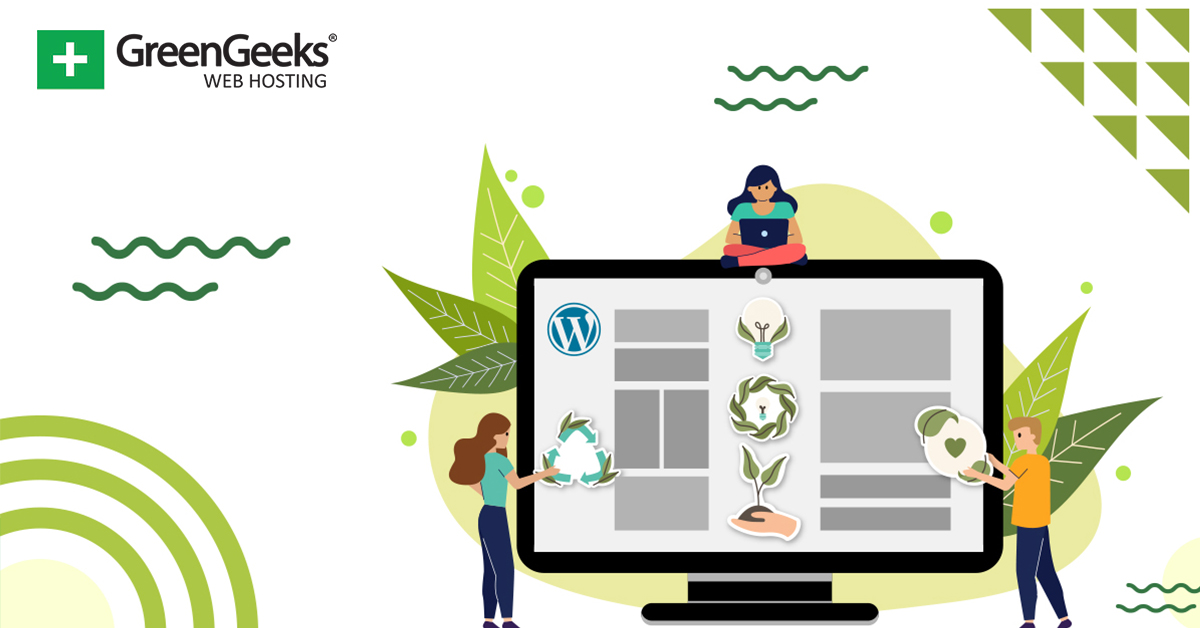
What You Need to Know
Eco-friendly labels are more than just stickers on a box; they prove that a company is taking concrete steps to protect the planet. More people are looking for these green seals of approval as they learn about the impact of their buying habits on the environment.
As a consumer who wants to help protect our environment, having enough knowledge of these eco-friendly labels is an essential skill.
These labels can confirm that a product is organic, cruelty-free, or responsibly sourced. They also help us spot genuine green efforts rather than empty marketing. Understanding them helps you support businesses that truly prioritize sustainability and avoid those that don’t.
In this article, we’ll break down the most common eco-friendly labels so you know exactly what each one means. We’ll explore their importance in promoting greener practices and healthier lifestyles. Ultimately, this guide will equip you to make smarter and more confident shopping decisions.
The Rise of Eco-Friendly Labels
Eco-friendly labels date back to the 1970s when the Blue Angel program was launched in Germany. Over the years, major environmental milestones like the first Earth Day and the rise of sustainability activism have pushed companies to highlight their green credentials.
As public awareness of issues like pollution and resource depletion grew, businesses began showcasing these eco-friendly labels to gain consumer trust.
Meanwhile, everyday shoppers have become more conscious of how their choices affect the planet. This shift encouraged brands to adopt eco-friendly labels as proof of their ethical and green practices. Over time, these labels evolved into a powerful selling point, letting people quickly spot products that align with their values.
Regulations soon followed, led by government bodies and international groups determined to protect consumers from misleading claims. Strict standards now define what counts as organic, cruelty-free, or sustainably sourced.
As a result, labels have become a reliable compass for anyone looking to shop responsibly and reduce their environmental impact.
Understanding Key Terms in Eco-Friendly Labeling
To help you better understand these labels, let’s look at some common terms you’ll encounter and what they really mean.
- Organic: Organic labels apply to crops or ingredients grown without most synthetic pesticides or fertilizers. Farmers use natural methods like crop rotation and composting to keep soil healthy.
- Fair Trade: Fair Trade certifications guarantee fair wages and safe working conditions for producers, often in developing countries. They also promote environmentally friendly methods, such as reducing pesticides and using water responsibly.
- Non-GMO: Non-GMO labels mean the product does not include genetically modified organisms (GMOs). These items avoid altering the DNA of plants or animals in a lab. Many shoppers choose non-GMO to support biodiversity and keep farming closer to its natural roots.
- Cruelty-Free: Cruelty-free labels appear mostly on cosmetics and cleaning products. They confirm that no animals were harmed or tested during product development.
- Biodegradable & Compostable: Biodegradable products break down naturally over time, usually in landfills or the open environment. Compostable items go a step further, turning into nutrient-rich material when placed in compost conditions. Examples include compostable coffee cups and utensils, which reduce waste by turning it into useful soil.
- Sustainably Sourced: Sustainably sourced means materials come from methods that protect future resources. This can involve responsible forestry, ethical fishing, or carefully managed farmland.
Decoding Common Eco-Friendly Labels
USDA Organic
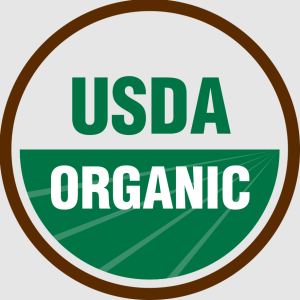

The USDA Organic label, managed by the U.S. Department of Agriculture’s National Organic Program, signifies products produced under strict standards. Established by the Organic Foods Production Act of 1990, this program ensures that organic farming practices promote ecological balance and conserve biodiversity.
To earn the USDA Organic label, farms must avoid synthetic fertilizers, sewage sludge, irradiation, and genetic engineering. They should rely on natural substances and physical, mechanical, or biologically based farming methods. For example, organic produce must be grown on soil that had no prohibited substances applied for three years prior to harvest.
Consumers can identify USDA Organic products by the official seal, which features a circular emblem with a green outline and the words “USDA Organic.” This label appears on a variety of products, including fruits, vegetables, dairy items, and processed foods.
Choosing USDA Organic products is important for consumers because it supports agricultural practices that reduce exposure to synthetic chemicals.
Fair Trade Certified


The Fair Trade movement originated in the 1940s as a way to support marginalized producers and promote equitable trade practices. Over time, it grew into a global effort, and in 1998, Fair Trade USA was founded to certify products in the United States.
This certification ensures that producers, especially in developing countries, receive fair compensation and work under ethical conditions. It also prioritizes sustainable farming practices that protect the environment.
Producers must meet strict criteria to earn Fair Trade certification. These include fair wages for workers, safe and healthy working conditions, and community development initiatives funded through premiums paid on certified products.
Additionally, Fair Trade encourages environmentally sustainable practices, such as reducing pesticide use and conserving water. The certification is most commonly seen on products like coffee, chocolate, tea, and bananas, but it also applies to items such as clothing and crafts.
Choosing Fair Trade Certified products is crucial because it supports ethical sourcing and empowers producers in developing regions. According to Fair Trade USA, the program has generated over $830 million in additional income for farmers and workers globally. By purchasing Fair Trade Certified items, consumers help improve livelihoods, protect the planet, and promote fairer trade practices worldwide.
Rainforest Alliance Certified


The Rainforest Alliance is dedicated to conserving biodiversity and promoting sustainable land use. Its certification program encourages environmentally and socially responsible practices in agriculture and forestry.
Achieving Rainforest Alliance certification requires farms and businesses to meet strict environmental, social, and economic criteria based on the 2020 Sustainable Agriculture Standard. These standards prioritize ecosystem conservation, biodiversity preservation, and sustainable land use by mandating the prevention of deforestation and the protection of natural habitats.
Farms must also adopt integrated pest management to minimize chemical use and mitigate environmental impacts. Additionally, the certification ensures fair labor practices, including safe working conditions, fair wages, and measures to prevent child or forced labor.
Community engagement is also critical, with farms required to respect land rights and contribute to local development.
Choosing products with the Rainforest Alliance Certified seal is important because it supports sustainable farming and ethical labor practices. By selecting these items, consumers contribute to the preservation of ecosystems and the well-being of workers. Notably, over 8,000 companies globally engage with the Rainforest Alliance to source certified ingredients.
Energy Star


ENERGY STAR is a joint program launched in 1992 by the U.S. Environmental Protection Agency (EPA) and the Department of Energy (DOE) to promote energy efficiency and reduce greenhouse gas emissions. Initially, it focused on labeling energy-efficient computers and monitors, but over time, it expanded to include a wide range of products and even buildings. The program’s primary goal is to help consumers and businesses save money and protect the environment through superior energy efficiency.
To earn the ENERGY STAR certification, products and buildings must meet strict energy efficiency criteria set by the EPA. For products, manufacturers are required to sign a formal agreement with the EPA and have their products third-party certified against performance requirements.
For buildings, achieving certification involves earning an ENERGY STAR score of 75 or higher on the EPA’s 1–100 scale, indicating that the building performs better than at least 75% of similar buildings nationwide. The score is based on actual, measured energy use.
Consumers can identify ENERGY STAR-certified products by the recognizable blue logo found on electronics, home appliances, HVAC systems, and more. This label signifies that the product meets or exceeds energy efficiency guidelines, leading to cost savings and environmental benefits.
Since its inception, ENERGY STAR and its partners have helped American families and businesses save nearly $500 billion in energy costs and reduced greenhouse gas emissions by 4 billion metric tons.
Green Seal


Green Seal, established in 1989, is a nonprofit organization dedicated to promoting sustainability by certifying products and services that meet rigorous environmental standards. As a pioneer in the eco-friendly certification movement, Green Seal has guided consumers and businesses toward more sustainable choices.
To achieve Green Seal certification, products must comply with comprehensive criteria that encompass the entire product lifecycle. Key requirements include the use of safer chemicals to minimize risks to human and environmental health. Products must also use responsibly sourced materials to ensure ethical procurement and adopt sustainable manufacturing practices that reduce resource consumption and pollution.
Furthermore, products are required to feature sustainable packaging solutions that lessen environmental impact and demonstrate verified performance to meet or exceed efficacy standards.
For consumers, the Green Seal certification serves as a reliable indicator of a product’s environmental responsibility. Choosing Green Seal-certified products means you can avoid exposure to harmful chemicals while supporting manufacturing processes that prioritize sustainability. This eco-friendly label empowers consumers to make informed choices that contribute to a healthier planet and promote safer, more sustainable industry practices.
LEED Certification (For Buildings)
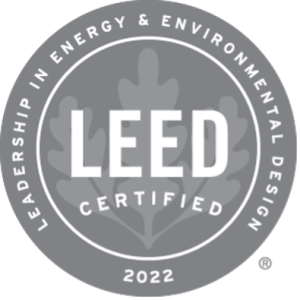

LEED (Leadership in Energy and Environmental Design) is a globally recognized green building certification system developed by the U.S. Green Building Council (USGBC). It provides a framework for designing, constructing, and operating environmentally responsible buildings. LEED focuses on various aspects of building design and operation to promote sustainability.
To achieve LEED certification, projects must meet specific criteria across several categories:
- Sustainable Sites: Selecting and developing sites that minimize environmental impact.
- Water Efficiency: Implementing strategies to reduce water consumption.
- Energy and Atmosphere: Enhancing energy performance and promoting renewable energy use.
- Materials and Resources: Using sustainable building materials and reducing waste.
- Indoor Environmental Quality: Ensuring healthy indoor air quality and access to natural light.
Projects earn points in these categories, and the total points determine the certification level: Certified (40–49 points), Silver (50–59 points), Gold (60–79 points), or Platinum (80+ points).
Overall, LEED certification signifies that a building meets high standards of environmental and human health performance. LEED-certified buildings are designed to reduce energy and water consumption, leading to lower utility bills. They also provide improved indoor environmental quality, which can enhance occupant comfort and well-being.
Additionally, choosing LEED-certified buildings supports broader environmental goals by reducing carbon footprints and promoting sustainable development.
Global Organic Textile Standard (GOTS)
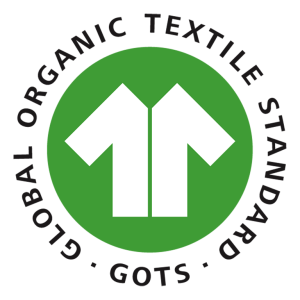

The Global Organic Textile Standard (GOTS) is a leading worldwide certification for organic textiles. It was established in 2002 by four organizations: the Organic Trade Association (OTA) from the USA, the Internationaler Verband der Naturtextilwirtschaft (IVN) from Germany, the Soil Association from the UK, and the Japan Organic Cotton Association (JOCA).
GOTS aims to define globally recognized requirements that ensure the organic status of textiles, from harvesting raw materials through environmentally and socially responsible manufacturing, up to labeling, to provide credible assurance to consumers.
Achieving GOTS certification for products requires them to meet stringent criteria throughout the entire textile supply chain. Key requirements include:
- Organic Fiber Content: Textile products must contain a minimum of 70% certified organic fibers. Labels can indicate “organic” for products with at least 95% organic fibers and “made with organic materials” for those with 70-94%.
- Prohibited Inputs: The use of toxic heavy metals, formaldehyde, aromatic solvents, functional nanoparticles, genetically modified organisms (GMOs), and their enzymes is forbidden. Additionally, azo dyes that release carcinogenic amines are not permitted.
- Environmental Management: Manufacturers must have an environmental policy, including target goals and procedures to minimize waste and discharges. Wastewater from wet processing units must be treated in a functional wastewater treatment plant.
- Social Criteria: Facilities must comply with social criteria based on the key norms of the International Labour Organization (ILO), ensuring fair wages, safe working conditions, and the prohibition of child labor.
The GOTS certification serves as a trustworthy eco-friendly label for consumers. By choosing GOTS-certified items, consumers support environmentally friendly practices and ethical labor conditions.
As of 2023, there are 14,676 GOTS-certified facilities worldwide. This reflects the standard’s significant impact on promoting sustainable textiles globally.
B Corp Certification


B Corp Certification, administered by the nonprofit organization B Lab, was established to redefine business success by promoting social and environmental responsibility. This certification encourages companies to balance profit with purpose, ensuring they contribute positively to society and the environment.
To achieve B Corp Certification, a company must meet rigorous standards across several key areas:
- Social and Environmental Performance: Companies complete the B Impact Assessment that evaluates their impact on workers, customers, community, and the environment. A minimum verified score of 80 out of 200 points is required.
- Accountability: Businesses must adopt a legal framework that requires consideration of all stakeholders in decision-making, not solely shareholders.
- Transparency: Certified B Corps are required to publicly disclose their social and environmental performance.
These criteria apply to various industries, from food companies to consulting firms.
For consumers, B Corp Certification serves as a trustworthy eco-friendly label. Supporting B Corps means endorsing businesses committed to higher standards of social and environmental performance, accountability, and transparency.
Cradle to Cradle (C2C) Certification
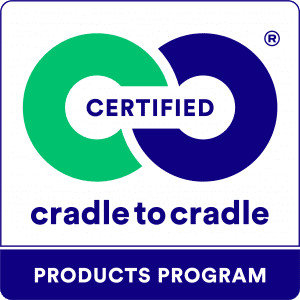

Cradle to Cradle (C2C) Certification, developed by the Cradle to Cradle Products Innovation Institute, is rooted in circular economy principles. It encourages designing products with their entire lifecycle in mind to make sure that materials are safe for humans and the environment and can be perpetually cycled.
To achieve C2C certification, products are evaluated across five key categories:
- Material Health: Ensuring materials are safe for humans and the environment.
- Product Circularity: Designing products for continuous recovery and reutilization to promote a circular economy.
- Clean Air & Climate Protection: Advancing renewable energy use and reducing harmful emissions during production.
- Water & Soil Stewardship: Implementing strategies to safeguard clean water and healthy soils.
- Social Fairness: Upholding ethical production practices that respect human rights and contribute to a fair and equitable society.
These criteria apply to various industries, including fashion, building materials, and home goods.
By choosing C2C-certified products, consumers support a closed-loop system where materials are reused or safely returned to nature, reducing waste and environmental impact. Overall, this eco-friendly label empowers consumers to make informed choices that contribute to a sustainable future.
Spotting Genuine Eco-Friendly Labels vs. Greenwashing
Greenwashing happens when brands make misleading claims about being environmentally responsible. They might use vague language like “all-natural” or “eco-friendly” without providing any real proof. This tactic confuses well-meaning shoppers and dilutes the value of genuine eco-friendly labels.
To spot authentic certifications, start by looking for official logos and certification numbers on product packaging. If you see a seal that claims the product is organic or cruelty-free, verify it on the organization’s official website.
Take a few seconds to read the label carefully, especially if it uses broad words like “natural” or “green.” Ask questions if something seems unclear and avoid products that don’t list credible sources for their environmental claims.
Several signs should raise a red flag for potential greenwashing. Over-the-top promises like “100% non-toxic” or “completely carbon-free” often lack scientific backing. Products that sport green leaves or earth images but show no recognized seals could be trying to hide behind pretty packaging.
If a company’s claims sound too good to be true or lack details on how they achieve their eco-friendly goals, it’s wise to proceed with caution. Your main goal is to support businesses that genuinely meet eco-friendly standards and steer clear of those simply hopping on the green bandwagon.
FAQs About Eco-Friendly Labels
They help consumers identify sustainable products and support practices that reduce environmental harm, conserve resources, and promote ethical labor.
Look for recognized certification logos, such as USDA Organic or Energy Star, and verify them through official certifying bodies’ websites or databases.
Eco-friendly labels are verified certifications, while greenwashing involves misleading claims about a product’s environmental benefits without evidence.
These labels are found in industries like food, textiles, construction, electronics, and personal care.
While they indicate significant efforts toward sustainability, no label guarantees 100% environmental neutrality. However, certified products are more sustainable than non-certified alternatives.
Sometimes, but the higher cost reflects sustainable materials and ethical practices. Long-term savings often result from energy efficiency or product longevity.
They promote reduced pollution, energy conservation, waste reduction, and support for sustainable industries. These factors contribute to a healthier planet.
Turning Knowledge into Action: The Future of Conscious Consumerism
Eco-friendly labels empower you to spark change each time you shop. Knowing them helps you choose better products for yourself while nudging the market toward greener innovations.
The simple act of looking past buzzwords and verifying a label’s authenticity propels companies to stay accountable and maintain strong environmental standards.
Keep in mind that your decisions ripple outward. One thoughtfully chosen product can encourage businesses to invest in ethical supply chains and cleaner manufacturing. Over time, those seemingly small choices add up, shaping a world where sustainability is not just a trend but a way of life.
So the next time you pick a product with a credible label on store shelves, you’re making a powerful statement about the kind of future we all deserve.







